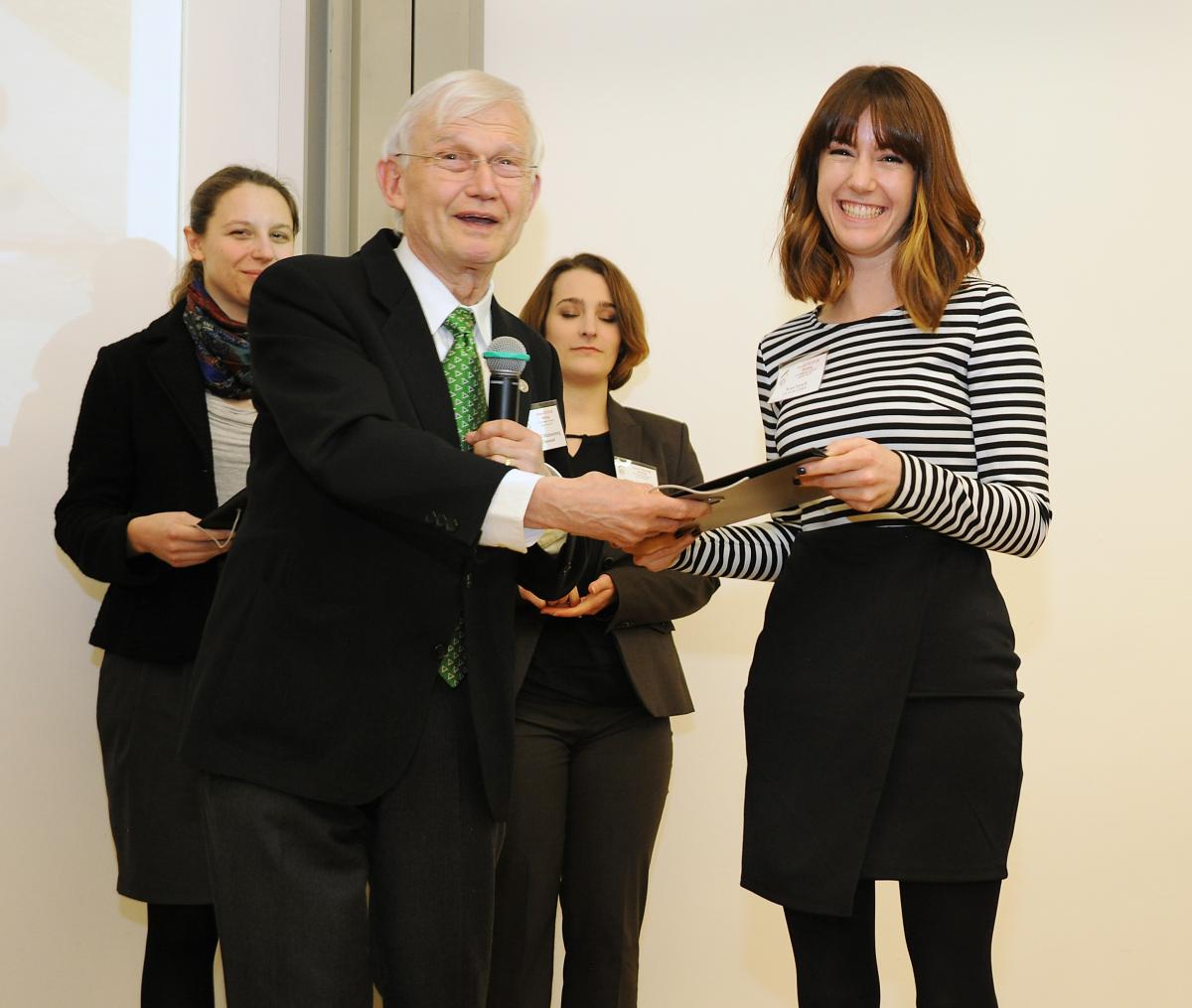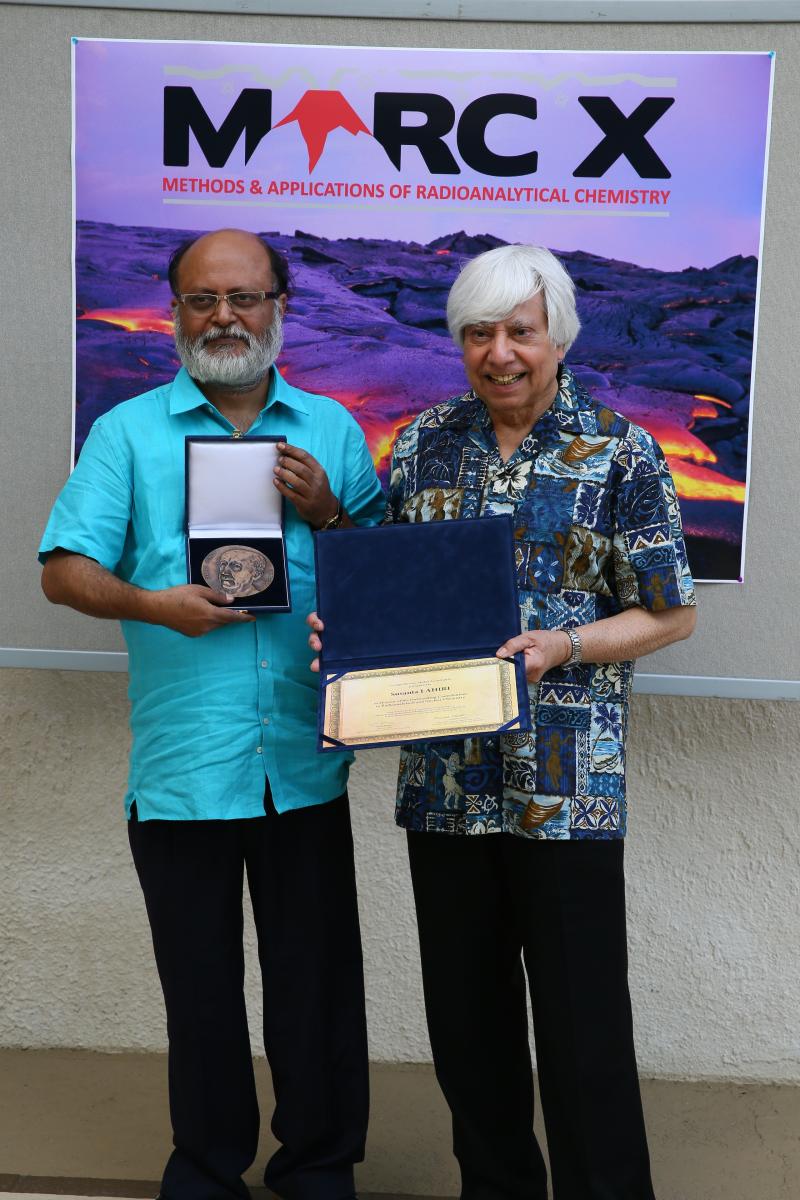Two distinctions for ISOLDE scientists
Two ISOLDE scientists have received prestigious awards this year for their research in the field of nuclear and particle physics.
Kara Marie Lynch was honoured with the GENCO Young Scientist award, which recognizes outstanding achievements of young scientists in the field of exotic nuclei and super-heavy elements. The GENCO prize is given to young researchers who have received their PhD less than five years before their nomination, to encourage and inspire the next generation of scientists. Kara was awarded for her outstanding work on the radiation emitted during the radioactive decay of an atomic nucleus, proving that the nucleus is deformed by the strong force acting between nuclear constituents. Her research has provided valuable insight into the strong force, a fundamental constituent of the Standard Model.
"I'm delighted to have received the GENCO Young Scientist award for the work that I'm involved in at the CRIS experiment. It means a lot to have the new technique of laser assisted nuclear decay spectroscopy be recognised by the exotic nuclei community. This method allows the radioactive decay of pure isomeric beams to be studied, and I look forward to continuing this work with the CRIS collaboration at ISOLDE," Kara said.

Kara Marie Lynch receives her award by Prof. Munzeberg.
Professor Susanta Lahiri of the Saha Institute of Nuclear Physics, Kolkata, India, has received the 2015 Hevesy Medal “for his outstanding and sustained contribution in heavy-ion induced radioisotope production, tracer packet technique, converter targets, and green chemistry”. This award recognizes a rich career, during which Lahiri has developed and maintained active international collaborations with leading physics and chemistry institutes, including CERN, notably for the development of high-power targets in the EURISOL-Design Study and LIEBE projects, and in research on radiopharmaceuticals and super-heavy elements. Amongst his long list of achievements, Prof. Lahiri launched the conference series on Application of RadiotraCers and Energetic Beams in Sciences (ARCEBS). He received the award at the tenth International Conference on Methods and Applications of Radioanalytical Chemistry (MARC X), another major conference in the field that took place 12 – 17 of April in Hawaii.

Photo from the HMA ceremony: Professor A. Chatt, Chair of the Hevesy Medal Award Selection Panel bestowed the award in a special session of the conference. The award was given on 12th April, in Kona, Hawai in tenth International Conference on methods of application of radio analytical chemistry.
Prof. Lahiri is an expert on production and separation of clinically important radionuclides by heavy ion and light ion induced nuclear reaction. He has also driven important studies on the bio-accumulation of radionuclides, as well as in atomic mass separation (AMS) related chemistry of astrophysical interest. He has fostered the search for new bio-reagents for green chemistry and production and application of tracer packets. He is also a specialist in detection of toxic elements at trace level. His fruitful collaboration with the ISOLDE target group spans more than a decade. This notably includes the speciation and harvesting of various radio-metals produced in liquid spallation target materials. This information has been of prime importance to benchmark modern Monte Carlo simulation codes, to design future spallation source facilities and propose new isotopes for medicine.
The medal is named after George de Hevesy, who received the Nobel Prize in chemistry in 1943 for his work on the use of isotopes as tracers in the study of chemical processes. The Hevesy Medal was established 25 years later as the premier international award of excellence in radio analytical and nuclear chemistry.
